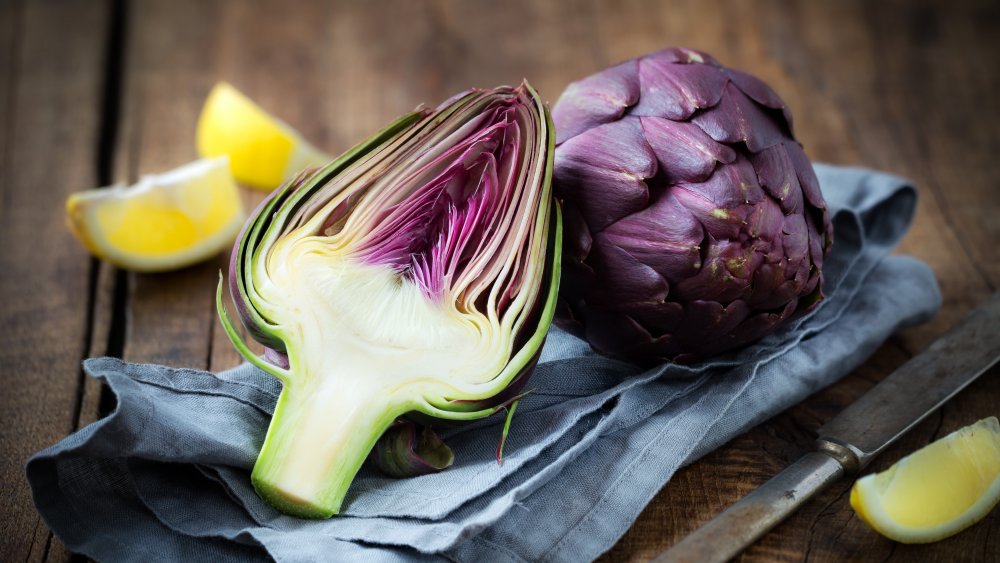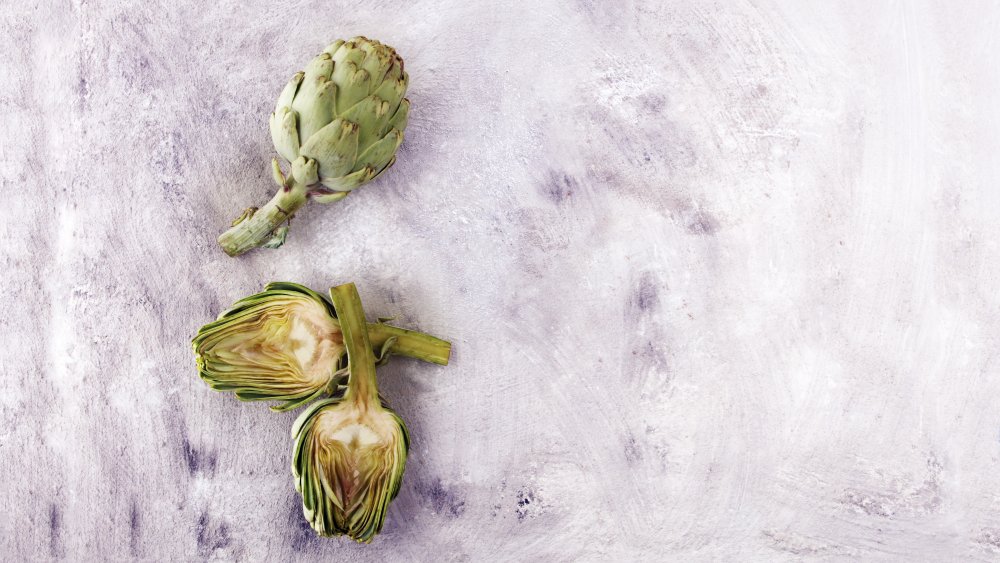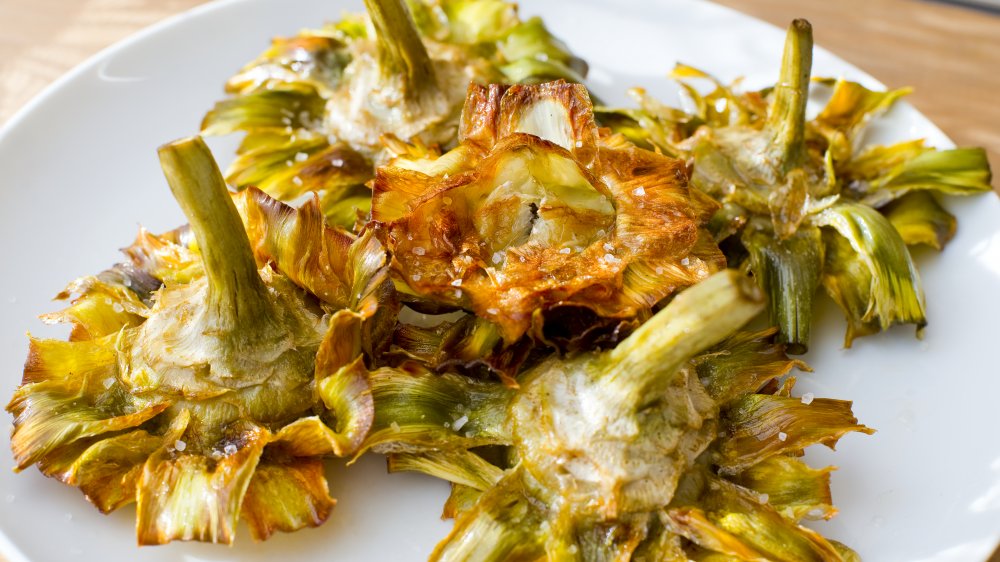This Is The Right Way To Clean And Prep Artichokes
Artichokes can be a daunting vegetable, with their prickly spikes and their rules about which parts you can eat and which parts you can't. No need to be intimidated though. As long as you know what you're doing, they're pretty easy to prepare. First, make sure you're buying it the right way. According to The Spruce Eats, the first artichoke season is in the spring — March through June — and the second is in the fall, which brings a smaller crop. You're going to want to choose artichokes with "closed heads," where the leaves are tightly packed together. The artichoke should have some weight to it. These will last up to a week in your fridge, but the sooner you eat them, the fresher they'll taste.
It's up to you whether or not you want to de-thorn the artichoke. The thorns are a little prickly, but you can definitely eat around them. If you have the time, however, and you want to play it safe, you can cut the thorns off the leaves with scissors.
A few ways to prep
Your prep work is going to depend on how you want to serve the artichokes, according to Serious Eats. If you're steaming the artichokes, the easiest option, all you need to do is trim off the upper third of the artichoke with a serrated knife, de-thorn, and cut off or trim the stem with a serrated or paring knife.
If you're just using the tender parts of the artichoke – the hearts and stems – your job is a little more difficult. Remove all the leaves except the thin, translucent ones right around the heart. Cut off the stem with a serrated or paring knife and set it aside. With the same knife, cut off the remaining leaves right above the part where they meet the heart. Use a paring knife to cut away any remaining green parts around the top and sides. Remove the furry prickles with a spoon or scoop and throw them away. With a paring knife, take the stems, which you'd set aside, and cut them down to the tender, white part. Then soak your artichoke — AllRecipes recommends doing this for an hour or so with a lemon in the water to avoid browning.
For Roman-Jewish Fried Artichokes
Finally, if you're making Roman-Jewish-style fried artichokes, the New York Times says you'll want to "shave off the tough outer leaves of artichokes until you reach the tender pale green or yellow leaves and create a bulbous shape." Then cut at least an inch off of the prickly top of the artichoke. For the stem, trim off the hard, outer green layer, leaving only two inches of the tender, inner part of the stem attached. Soak the artichokes in lemon, as above. While your frying oil is heating, dry the soaked artichokes with paper towels. Then tap the flat tops of them against your table or counter to loosen the leaves. From there, season your artichokes as the recipe specifies – you're ready to get cooking.
As long as you have the knowledge and the tools you need — a serrated knife, a paring knife, a lemon, and patience — making artichokes doesn't have to be stressful or difficult. After all, the fact that the leaves are thorny doesn't mean the process needs to be.


